How to plant a juniper and care for it on the site
One of the popular solutions for landscaping a summer cottage is a coniferous tree. Among the ornamental conifers, the juniper stands out: this plant has many varieties and adapts well to adverse conditions. Planting and caring for it is not difficult, but the plant has several preferences for the place of growth, warmth and humidity.
Plant features
The genus juniper is a representative of the cypress family. Among the species of this genus, both trees and shrubs are found. The height of trees reaches 30 m, shrubs - up to 1.5 m. The shape of the tree crown is usually cone-shaped or pyramidal, the bush is creeping. It is formed by flexible branches, densely covered with scaly or needle-like needles. That is why a tree or bush seems lush.
The variety of juniper varieties allows you to choose a tree for any composition, taking into account the possibilities of the site. Of interest is not only the various shades of needles, but also the fruits of the juniper - cones. They are colored in dark blue and have both beauty and useful properties. The needles of a plant release phytoncides into the atmosphere - substances that disinfect the air and saturate it with a pleasant aroma. Juniper wood also gives off a smell.
Types and varieties for a summer cottage
The variety is selected in accordance with the growing region. There are decorative forms of junipers that will tolerate long-term frosts well in the Urals and Siberia. Most representatives of the genus are not demanding on watering, wintering, feeding and do not need pruning. At the same time, junipers are not very susceptible to diseases and pests.
There are about 70 species of juniper, 15 of them are cultivated, but the most popular are scaly, rocky, ordinary, Chinese, horizontal, Cossack, middle and virginian. For growing outdoors, frost-resistant varieties are often used. The most unpretentious species are rocky and Virginia.
Popular decorative species and varieties:
- Ordinary - a type of cone-shaped juniper. The tree grows up to 10 m, but develops very slowly. The plant has a lifespan of about 200 years. The species is frost-resistant, not particularly demanding, grows well in partial shade and in drought conditions.
- The rocky Blue Errow variety is a representative of the rocky juniper species. They are very hardy, cope with drought, frost. This tree is of medium height, usually no more than 5 m. Blue Arrow has a narrow cone-shaped crown and rich blue needles. It looks most decorative on rocky areas.
- Juniper Chinese Strikta is a tree up to 2.5 m tall with vertically growing branches. Thorny needles in spring have a blue-green tint, and by winter they become steel.
- Meyeri is an evergreen shrub. The needles at the tips are silvery blue. An excellent participant in the mixborder.
- Horstmann is a tall shrub with drooping branches, which makes it look like a weeping willow. Shoots cover up to 2 m in diameter. The needles are small, prickly, dark green.
- Juniper scaly Holger is a spreading bush, the decorative effect of which is a combination of dark green old needles and young golden needles.
- Prince of Wales is a horizontal juniper variety. One of the most popular species, it forms dense dark green thickets.
- Juniper scaly Blue svid is a shrub with blue needles, which acquire a metallic hue by winter. The bush has a compact cushion shape.Its height does not exceed 1.5 m.
- Old Gold is a representative of the medium juniper species. This species is a hybrid of the common and Cossack juniper. The variety is a shrub with golden needles.
- Mint julep is another medium-sized juniper. This is a shrub with a spreading crown, its needles are rich green. Demanding on the light.
- Andorra compact is a variety of horizontal juniper. This shrub does not exceed 0.4 m, but it is 1.5 m in diameter. The needles are scaly, blue-silver.
- Repanda is a creeping evergreen shrub of the common species. Unpretentious in care, withstands frosts. Suitable for creating a coniferous lawn.
How to choose a seedling
The best planting material is bought in special containers. Such conifers develop well after transplantation. Another option is a tree with a lump of earth, which is wrapped in wet burlap.
Recommendations for choosing a seedling:
- It should be 3-4 years old, such a plant tolerates transplantation better.
- The root system is closed, but open is also allowed.
- The color of the needles is uniform, corresponding to the variety.
- There should be no cracks or other damage on the bark of the trunk.
Where and when is it better to plant a juniper on the site
Juniper cultivation starts with choosing the right planting site. These conifers prefer good lighting and usually do not tolerate shading well. Sunlight is especially important for varieties with an unusual color of needles.
Other requirements for the landing site:
- It should not be waterlogged or close to groundwater.
- Protection from drafts is mandatory - junipers react poorly to constant exposure to direct air currents.
- The plant is planted at a distance from buildings and other plants.
The soil for cultivation should be light, loose and fertile. Junipers grow well on sandy, sandy loam and loamy soils. For dwarf specimens, soils with an average nutrient content are better suited. Their abundance negatively affects the decorative properties of conifers.
It is customary to plant junipers in the spring, when it gets a little warmer. The planting time depends on the type of root system. It is better to plant with open roots in April or September, with closed ones - at any time from April to October.
How to plant an ephedra correctly
Planting and caring for junipers is easy. You just need to adhere to a few rules, and then the plant will develop healthy and strong. When a good landing site has been selected, you need to prepare a landing pit. Its size depends on the size of the root system, it should be about 2.5 times the size of a clod of earth with roots. On average, for small seedlings, a hole is dug 50 × 50, for large - 70 × 70.
How to plant a juniper correctly:
- A drainage layer is laid at the bottom of the planting pit so that the plant does not suffer from moisture stagnation at the roots. Expanded clay, broken brick, sand are taken as drainage. Drought is not as terrible for the ephedra as the constant waterlogging of the soil.
- If the soil on the site is too clayey and heavy, then a mixture of garden soil and coniferous, sand and peat must be added to the hole. An example of a substrate for planting: 2 parts of peat, 1 part of sand, 2 parts of humus and 2 parts of turf.
- For tall varieties, it will not be superfluous to add fertilizers to the planting pit. Suitable "Kemira wagon" in the amount of 150 g or 300 g of nitrophoska.
- Seedlings grown at home are moved from the pots by the transfer method - that is, together with a clod of earth on the roots. This will minimize possible damage to the root system. You need to plant the plant quickly so that the roots do not have time to dry out. This is especially true for purchases with an open root system.
- The seedling is sprinkled with the remaining substrate, tamped down a little. The root collar must remain above the soil level.
- It remains to water each well abundantly with warm settled water and mulch the trunk circle. This is necessary to retain moisture. Mulch also inhibits the development of weeds. Mulch composition: peat, wood chips.
- After planting, you can apply fertilizer for growth - "Epin".
Advice! When planting a group of plants, keep a distance of 0.5 to 2 m between seedlings, depending on the type of planting and the size of the adult plant.
Care rules
To properly care for ornamental junipers, you need to know their preferences. Many varieties love light and moderate humidity, but not all of them tolerate drafts and polluted air.
Young plants need protection from the midday rays of the sun, as fragile needles and bark are afraid of burns. Mature shrubs and trees do not need shading, as the plant as a whole is light-requiring.
Junipers are prized for their drought tolerance, but that doesn't mean you can leave them dry for extended periods of time. In a period of intense heat, an average of 10-20 liters of water is consumed per bush. For some varieties, spraying is important. So the needles are cleaned of dust and saturated with moisture. The procedure is recommended to be carried out in dry weather in the evening or morning, when the sun will not actively evaporate the drops. If you spray the top of a juniper during the day, there is a risk of burns.
In order to get air to the roots, after each watering, a slight loosening of the soil is carried out. More often it is required for young animals while they are actively developing. If mulching is carried out, then it is not necessary to loosen the soil.
Fertilizing the junipers is optional. Only in dry periods it is advisable to introduce complex fertilizing or fertilizers with nitrogen into the soil, 2-3 times per season.
Hygienic pruning is carried out every spring: all dried and damaged branches must be removed. A haircut for shaping is rarely carried out, since junipers do not differ in their growth rate. Shoots should be shortened by no more than a third. Tapeworm plants do not need to be formed, but bushes in hedges are necessary.
In order for a young juniper to successfully winter in the country, it must be protected from frost and bright sun. Shelter is usually only required in the very first winter after planting.
How to cover young seedlings for the winter:
- Cone-shaped trees are tied with ropes to prevent branches from breaking under the weight of snow.
- Plants are covered with air-permeable material. It is allowed to use burlap, cotton fabric, kraft paper.
- To cover young bushes with spruce branches, it is placed from bottom to top in two layers.
- In particularly cold winters, a double shelter is made.
- The fabric or spruce branches are not removed until March so that the bush or tree does not suffer from the bright spring sun. Common juniper varieties are especially susceptible to burning.
Regardless of the type and variety, the juniper works in the summer cottage as a natural air purifier. Planting an ephedra will not take much effort, as well as caring for it, but the decorative properties of a growing tree or bush will not cease to amaze gardeners.
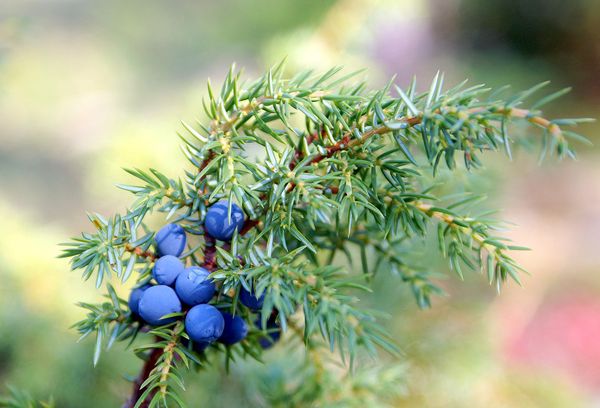
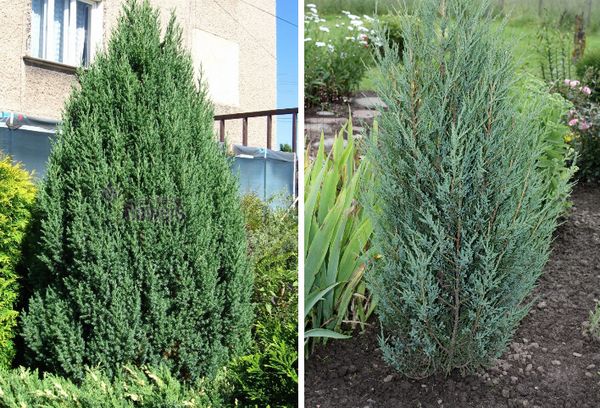
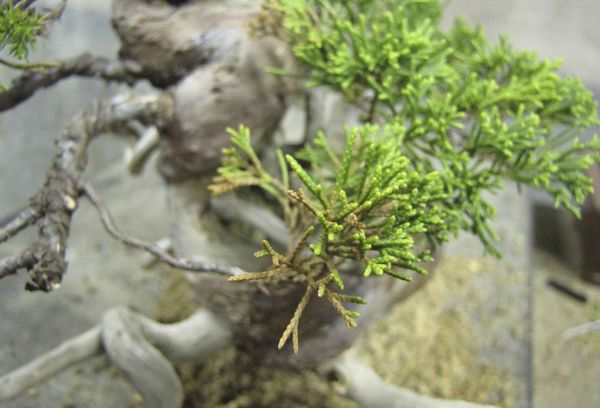
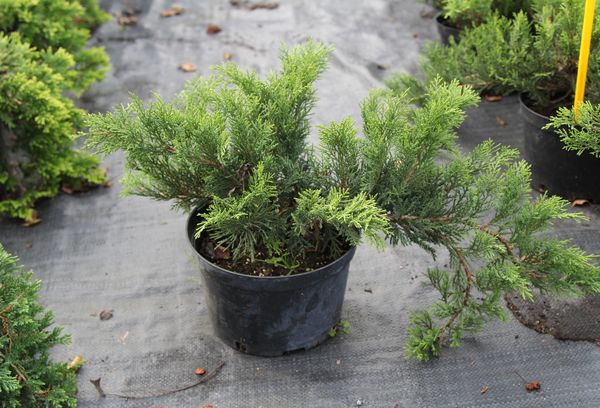
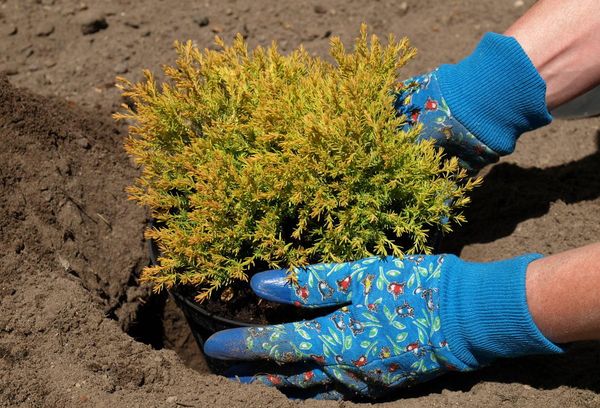
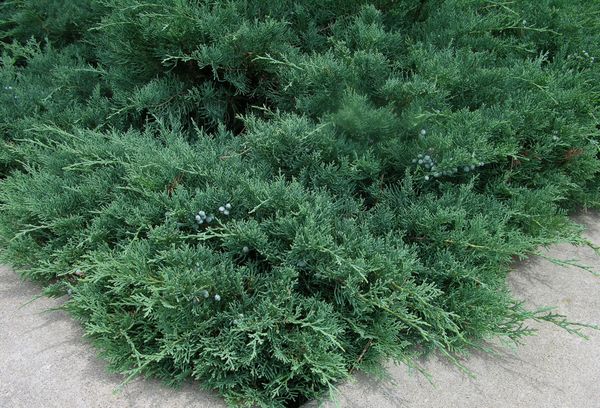
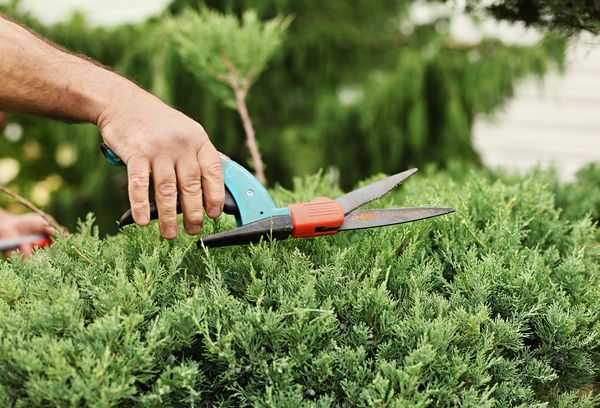
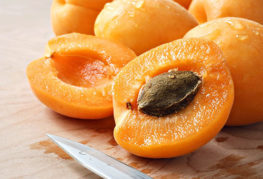

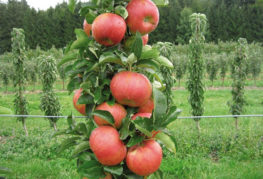
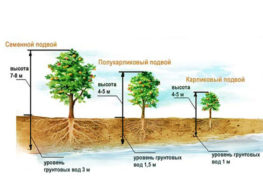
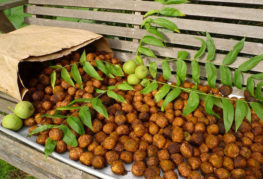
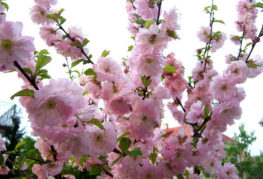
and will be published shortly.